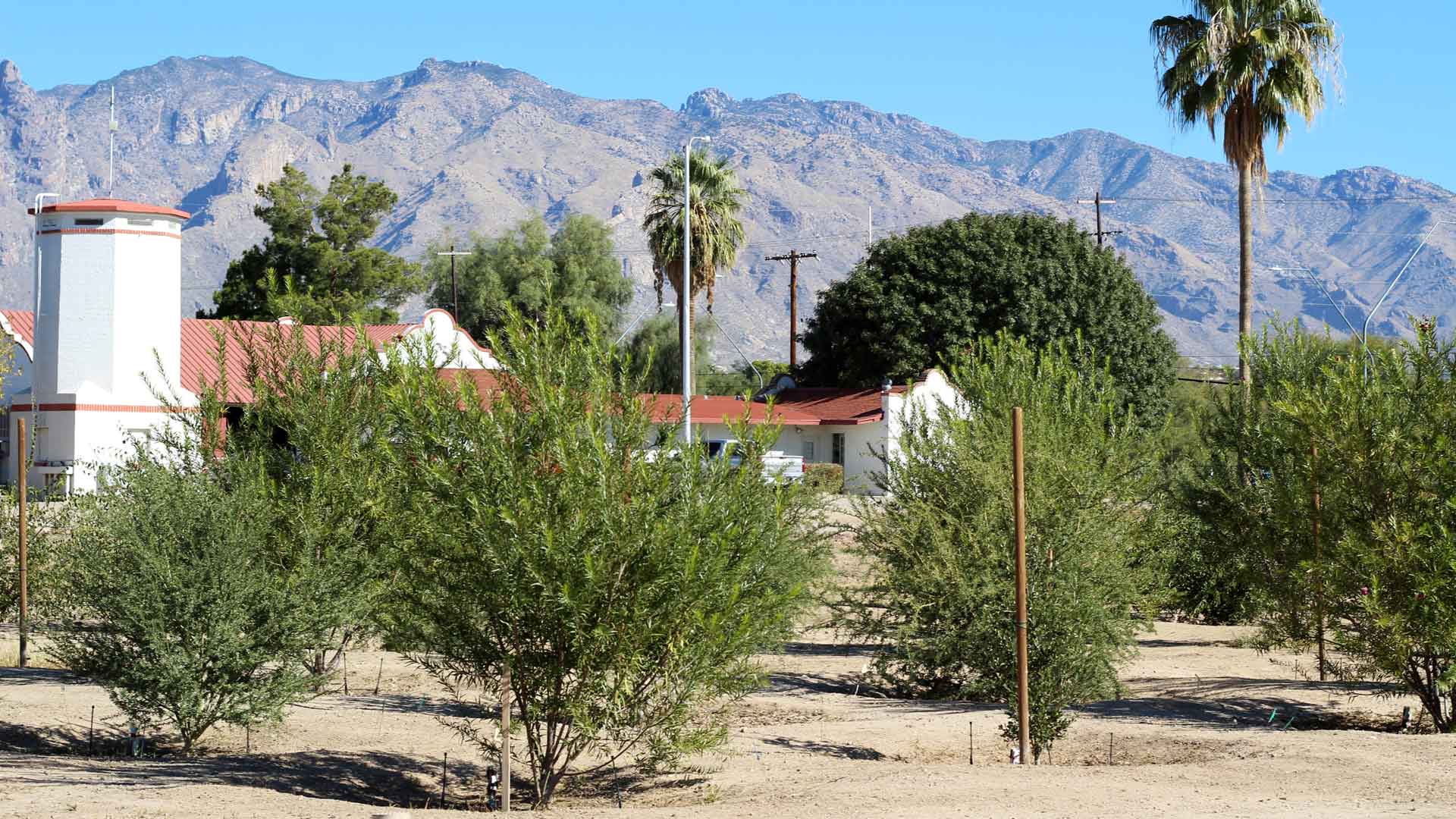 Trees from the Smart Tree Watering Project at the University of Arizona Campus Agricultural Center on Wednesday, Nov. 13, 2024, in Tucson, Ariz. The project is watering 80 trees using rainwater harvesting, mulching and hydrogels. There are four types of trees such as ironwood, hackberry, oak and desert willow.
Trees from the Smart Tree Watering Project at the University of Arizona Campus Agricultural Center on Wednesday, Nov. 13, 2024, in Tucson, Ariz. The project is watering 80 trees using rainwater harvesting, mulching and hydrogels. There are four types of trees such as ironwood, hackberry, oak and desert willow.
University of Arizona (UA) researchers have been exploring how different tree-watering strategies can reduce water use and combat extreme heat at the Campus Agricultural Center.
The 18-month study began with five to seven gallon saplings of oak, desert willow, ironwood and hackberry trees.
Bo Yang, professor of landscape architecture and urban planning at the UA is a faculty advisor for the Smart Tree Watering project.
Yang said methods like rainwater harvesting, mulching and the use of plastic and cellulose-based hydrogels that have been applied to the 80 trees in two test plots can use up to 60% less water.
“Mulching is probably one of the better ones, also is economically viable, it can be scalable,” Yang said. “When we see the soil moisture, the data shows they are about 22-37% higher soil moisture content than without mulching.”
The team found that these techniques could save up to 1,700 gallons of water per tree each year.
Yang added that the goal is to develop a scalable, low-tech irrigation strategy that people can use in their backyard and other public spaces.
“We’re also working with ASU researchers to look at how we can scale up this research, they are using machine learning AI models to help us see the benefits. What if this type of technology is being used at the Tucson Metro, the Phoenix Metro area, urban environment? How the benefit of our water saving and the shade, heat mitigation could be,” Yang said.
 Bo Yang, UA professor of landscape architecture and urban planning at the Campus Agricultural Center in Tucson, Ariz., on Wednesday, Nov. 13, 2014. Yang is a faculty advisor for the Smart Tree Watering project.
Bo Yang, UA professor of landscape architecture and urban planning at the Campus Agricultural Center in Tucson, Ariz., on Wednesday, Nov. 13, 2014. Yang is a faculty advisor for the Smart Tree Watering project.
The research, driven by extreme heat and water challenges, aims to support ways communities can expand urban forestry practices where conventional irrigation is impractical in collaboration with partners like the City of Tucson and Arizona State Department of Forestry and Fire Management.
Nicole Gillett, urban forestry manager for the City of Tucson said that anyone who plants trees could really benefit from this research.
“It’s actually been really affirming to see that some of our lowest barrier technologists are really, really effective at helping grow young trees,” Gillett said.
The researchers are also examining the root structures to determine if the irrigation techniques can promote more stabilized roots that can withstand heavy winds during monsoon season.
Grant McCormick, environmental science professor at the UA and fellow faculty advisor for the project noted the tremendous growth rates of the trees.
“I think there’s going to be more understanding as the soil data, the monitoring, the sensor data is evaluated more and then as the roots are actually harvested to see where the spread of the roots are and the characteristics of the roots as it relates to the different treatments that were mentioned that were being tested,” McCormick said.
This research is supported by ABOR through the Regents grant program.
Nick Opich with ABOR said that the office set out to solve some of Arizona’s challenges like heat mitigation, water conservation, and other environmental and community projects.
“The focus was how we [could] leverage the university expertise,” Opich said. “And transfer that over to the practical application of the state agencies.”
The project and its researchers recently received national recognition by the American Society of Landscape Architects.
ABOR holds the broadcast licenses for AZPM.

By submitting your comments, you hereby give AZPM the right to post your comments and potentially use them in any other form of media operated by this institution.